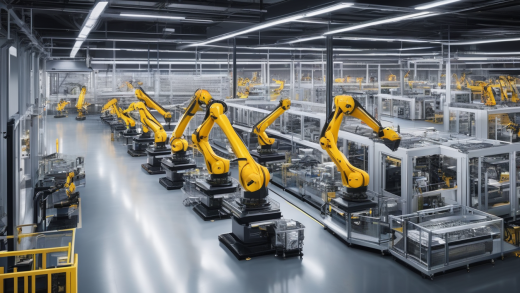The world is on the brink of a transportation revolution, and at the heart of this transformation is artificial intelligence (AI). Autonomous vehicles, once a concept reserved for science fiction, are now becoming a reality, thanks to the rapid advancements in technology. Imagine a future where cars drive themselves, effortlessly navigating through bustling city streets and winding country roads. This isn’t just a dream anymore; it’s happening right before our eyes!
Recent breakthroughs in machine learning and computer vision are pushing the boundaries of what autonomous vehicles can achieve. These vehicles can now process vast amounts of data in real-time, allowing them to make split-second decisions that enhance safety and efficiency. For instance, AI algorithms can analyze the behavior of pedestrians and other vehicles, predicting movements and adjusting driving strategies accordingly. This capability is akin to giving a car a sixth sense, enabling it to react to its environment with remarkable precision.
However, with great innovation comes great responsibility. As these vehicles become more prevalent, we must address the safety and regulatory concerns that accompany them. How do we ensure that these AI-driven machines operate safely on our roads? What regulations need to be put in place to protect the public? These questions are critical as we seek to build trust in this new technology.
Moreover, the integration of autonomous vehicles into our existing transportation systems could lead to significant changes. Picture a world where traffic jams are a thing of the past, thanks to the optimized routing capabilities of self-driving cars. This could not only reduce congestion but also improve overall urban mobility, making our cities more livable.
As we move forward, it’s essential to consider the broader implications of this technology. From ethical dilemmas surrounding decision-making in emergencies to the potential displacement of jobs, the rise of autonomous vehicles will undoubtedly reshape our society. The question remains: are we ready for this change?
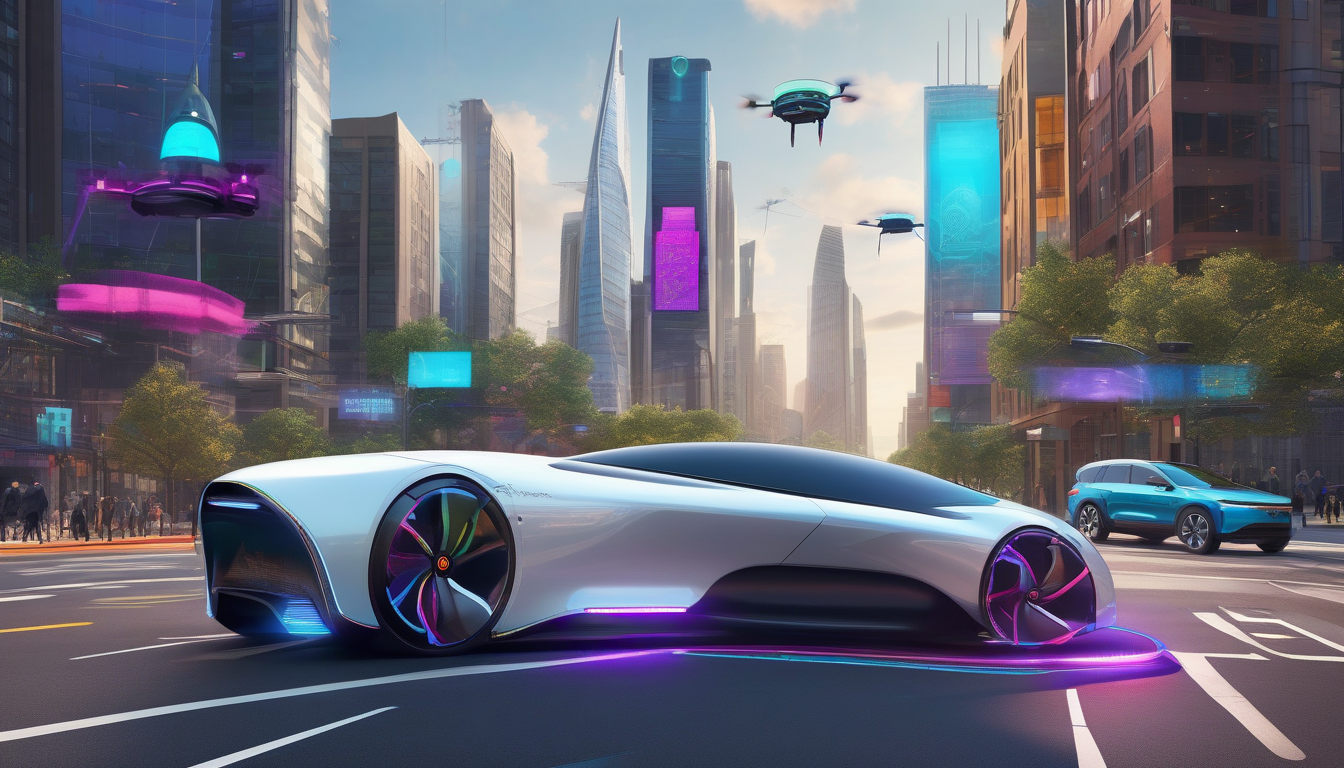
Technological Advancements in AI
The world of autonomous vehicles is experiencing a seismic shift, primarily driven by the rapid advancements in artificial intelligence (AI). Recent breakthroughs in machine learning and computer vision are not just enhancing the capabilities of self-driving cars; they are redefining what we thought was possible. Imagine a vehicle that can “see” its surroundings just like a human, processing vast amounts of data in real-time to make split-second decisions. This is no longer science fiction; it’s happening right now!
For instance, AI algorithms are being developed to interpret complex environments, allowing vehicles to navigate through bustling city streets or rural backroads with remarkable precision. These advancements empower cars to recognize pedestrians, cyclists, and other vehicles, ensuring a safer driving experience. But how do they achieve this? Through the use of advanced sensors and cameras, coupled with robust data processing capabilities, autonomous vehicles can learn from their surroundings and improve over time.
Moreover, the integration of deep learning techniques is enabling these vehicles to adapt to various driving conditions. For example, they can learn to handle inclement weather, such as rain or snow, by analyzing patterns and adjusting their responses accordingly. This adaptability is crucial for gaining public trust in self-driving technology. As we delve deeper into these advancements, it’s essential to consider their implications:
- Increased Safety: With AI, the potential for human error is significantly reduced, leading to safer roads.
- Enhanced Efficiency: AI can optimize routes, reducing travel time and fuel consumption.
- Real-Time Decision Making: Autonomous vehicles can process information and react faster than humans.
As we continue to push the boundaries of AI in the automotive industry, the possibilities seem endless. The future of driving is not just about getting from point A to point B; it’s about creating a seamless, intelligent experience that transforms our relationship with transportation. Buckle up, because the ride is just getting started!
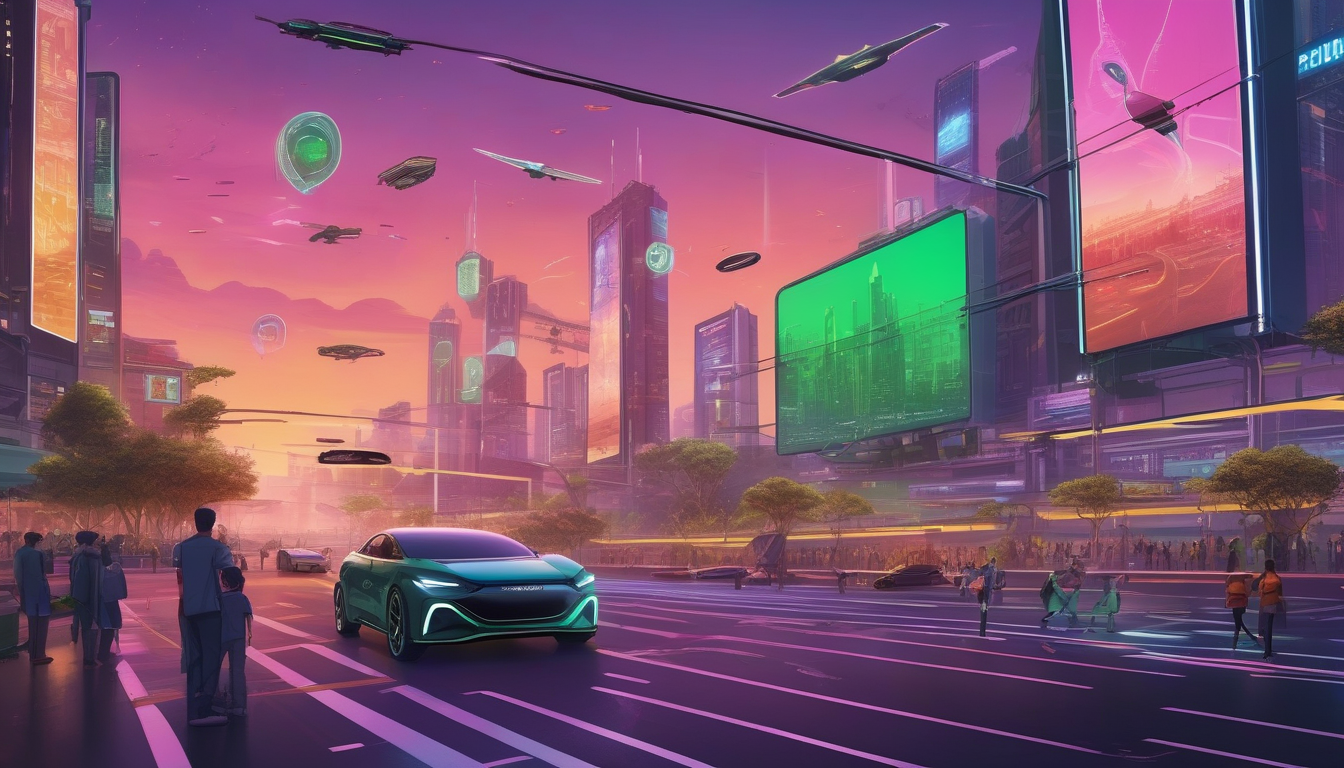
Safety and Regulation Concerns
As we dive deeper into the world of autonomous vehicles, one of the most pressing issues on everyone’s mind is safety. With these self-driving cars taking to the roads, how do we ensure that they are as safe as human drivers, if not safer? The truth is, while technology has made incredible strides, the potential for accidents still looms large. Imagine a scenario where a self-driving car must choose between swerving to avoid a pedestrian or staying on course to protect its passengers. These split-second decisions can be life-altering, raising questions about the algorithms that govern them.
Moreover, regulatory frameworks are still catching up with the rapid advancements in this technology. Governments around the world are grappling with how to create laws that not only keep pace with innovation but also protect the public. For instance, who is liable in the event of an accident involving an autonomous vehicle? Is it the manufacturer, the software developer, or the owner? These questions are not just legal technicalities; they have real-world implications that could determine the future of self-driving technology.
To address these concerns, many experts suggest the establishment of comprehensive safety standards and regulations that can guide the development and deployment of autonomous vehicles. This could include:
- Rigorous testing protocols
- Mandatory safety features
- Clear liability frameworks
In addition, public trust is essential for the widespread adoption of autonomous vehicles. If people don’t feel safe, they won’t embrace this technology. Therefore, transparency in how these vehicles operate and the measures in place to ensure safety will be crucial. As we look to the future, it’s clear that while the promise of autonomous vehicles is exciting, the path to their safe integration into our roads is filled with challenges that must be navigated carefully.

Impact on Transportation Systems
The integration of autonomous vehicles into our transportation systems is like adding a new player to a well-rehearsed orchestra. Suddenly, the dynamics change, and the potential for harmony or chaos hangs in the balance. Imagine a world where traffic flows seamlessly, with self-driving cars communicating with each other and the infrastructure around them. This is not just a dream; it’s a potential reality that could redefine urban mobility.
One of the most significant impacts of autonomous vehicles is their ability to reduce traffic congestion. By utilizing advanced algorithms and real-time data, these vehicles can optimize routes and adjust speeds, leading to smoother traffic flow. Studies suggest that if just 10% of vehicles on the road were autonomous, we could see a dramatic decrease in traffic jams. This is crucial in bustling cities where gridlock is a daily headache.
Moreover, the efficiency of public transportation could see a makeover as well. Imagine buses that arrive precisely when needed, without the long waits or overcrowding. Autonomous shuttles could fill in gaps in public transport, providing on-demand services that cater to the needs of commuters. This could lead to a more integrated and user-friendly transportation network.
However, the transition won’t be without its challenges. As we usher in this new era, we must address potential issues of road safety and infrastructure readiness. For instance, will our roads and traffic signals be able to communicate effectively with these high-tech vehicles? It’s a question that city planners and engineers must tackle head-on.
In conclusion, the impact of autonomous vehicles on transportation systems could be transformative, leading to improved efficiency, reduced congestion, and enhanced public transport options. But as with any significant change, it requires careful consideration and planning to ensure that we hit all the right notes in this new symphony of mobility.

Ethical Considerations
The rise of autonomous vehicles (AVs) is not just a technological marvel; it also brings forth a myriad of ethical dilemmas that society must grapple with. Imagine a world where cars make life-and-death decisions on our behalf. Sounds like science fiction, right? But this is the reality we are heading towards. The question is: who is responsible when a self-driving car encounters a critical situation? Is it the manufacturer, the software developer, or the owner of the vehicle? These are not just theoretical questions; they have real implications for liability and accountability.
Moreover, consider the ethical implications of decision-making algorithms. For example, if an AV must choose between hitting a pedestrian or swerving into a wall, how should it decide? Should it prioritize the safety of its passengers over that of pedestrians? This kind of moral calculus is challenging and raises significant concerns about the values we want our machines to uphold. Should we program AVs to follow strict utilitarian principles, or should they be guided by a more nuanced ethical framework?
To further complicate matters, public trust plays a crucial role in the adoption of AV technology. If people feel that these vehicles make morally questionable decisions, they may resist using them altogether. Therefore, transparency in how these ethical algorithms are developed and implemented is essential. Consumers should be informed about the decision-making processes behind their AVs to foster a sense of trust.
In summary, the ethical landscape surrounding autonomous vehicles is complex and multifaceted. As we forge ahead with this innovative technology, we must engage in open dialogues about these critical issues. Who will be held accountable in the event of an accident? How do we ensure that AVs make decisions that align with societal values? These questions are not just for engineers and policymakers; they require input from all of us as we navigate this brave new world of autonomous driving.

Consumer Acceptance and Public Perception
When it comes to autonomous vehicles, consumer acceptance is a crucial factor that can make or break the future of this technology. Imagine stepping into a car that drives itself; it sounds like something out of a sci-fi movie, right? But for many, this concept is still wrapped in skepticism and uncertainty. The public perception of self-driving cars is a complex tapestry woven from personal experiences, media portrayal, and societal norms.
Research shows that while many people are excited about the prospect of autonomous vehicles, a significant portion remains hesitant. Why? One major concern is safety. How can we trust a machine to make life-and-death decisions? According to a recent survey, 60% of respondents expressed doubts about the reliability of AI in critical situations. This fear often overshadows the potential benefits, such as reduced traffic accidents and improved mobility for those unable to drive.
Moreover, the media’s role in shaping public opinion cannot be underestimated. Headlines often focus on accidents involving self-driving cars, which can amplify fears and overshadow positive advancements. It’s essential for manufacturers and advocates to share success stories and educate the public about the rigorous testing and safety protocols in place. Transparency is key here; the more people understand how these vehicles operate, the more likely they are to embrace them.
Additionally, the social implications of autonomous vehicles also play a significant role in shaping public perception. People often associate driving with freedom and control. The thought of relinquishing that control to a machine can be unsettling. To bridge this gap, it’s important to engage with communities and address their concerns directly. Building trust through open dialogue can pave the way for smoother acceptance.
In summary, while the road to consumer acceptance of autonomous vehicles is fraught with challenges, understanding public perception is the first step in overcoming them. As technology continues to evolve, so too must our conversations around it. The future of mobility hinges not only on innovation but also on the willingness of society to adapt and embrace change.

Environmental Implications
The rise of autonomous vehicles (AVs) is not just a technological marvel; it also presents significant environmental implications that could reshape our planet’s future. Imagine a world where cars communicate with each other, optimizing routes and reducing traffic jams. This scenario isn’t just a dream—it’s the potential reality of AVs. By leveraging artificial intelligence, these vehicles can minimize fuel consumption and lower emissions, contributing to a cleaner environment.
One of the most compelling aspects of autonomous vehicles is their ability to operate more efficiently than traditional cars. They can maintain optimal speeds, reduce unnecessary acceleration, and brake gently, which collectively leads to lower greenhouse gas emissions. Furthermore, as the technology matures, we may see a shift towards electric autonomous vehicles, which could drastically decrease our reliance on fossil fuels. This transition could be pivotal in combating climate change.
However, the environmental impact of AVs is not solely positive. There are concerns about the increased energy demands associated with manufacturing and maintaining these high-tech vehicles. For instance, the production of batteries for electric AVs can be resource-intensive and environmentally damaging. It’s crucial to consider the entire lifecycle of these vehicles, from production to disposal. Here are some key factors to ponder:
- Energy Sources: The environmental benefits of AVs largely depend on the energy sources powering them. Renewable energy could enhance their sustainability.
- Vehicle Design: Sustainable materials and efficient manufacturing processes can mitigate some environmental impacts.
- Urban Planning: The integration of AVs into urban environments must be managed carefully to avoid increased urban sprawl and energy consumption.
In conclusion, while autonomous vehicles hold the promise of a more sustainable future, we must tread carefully. Balancing the benefits with the potential drawbacks will require innovative thinking and responsible policies. The road ahead is complex, but with thoughtful planning, we can harness the power of AVs to create a greener planet.
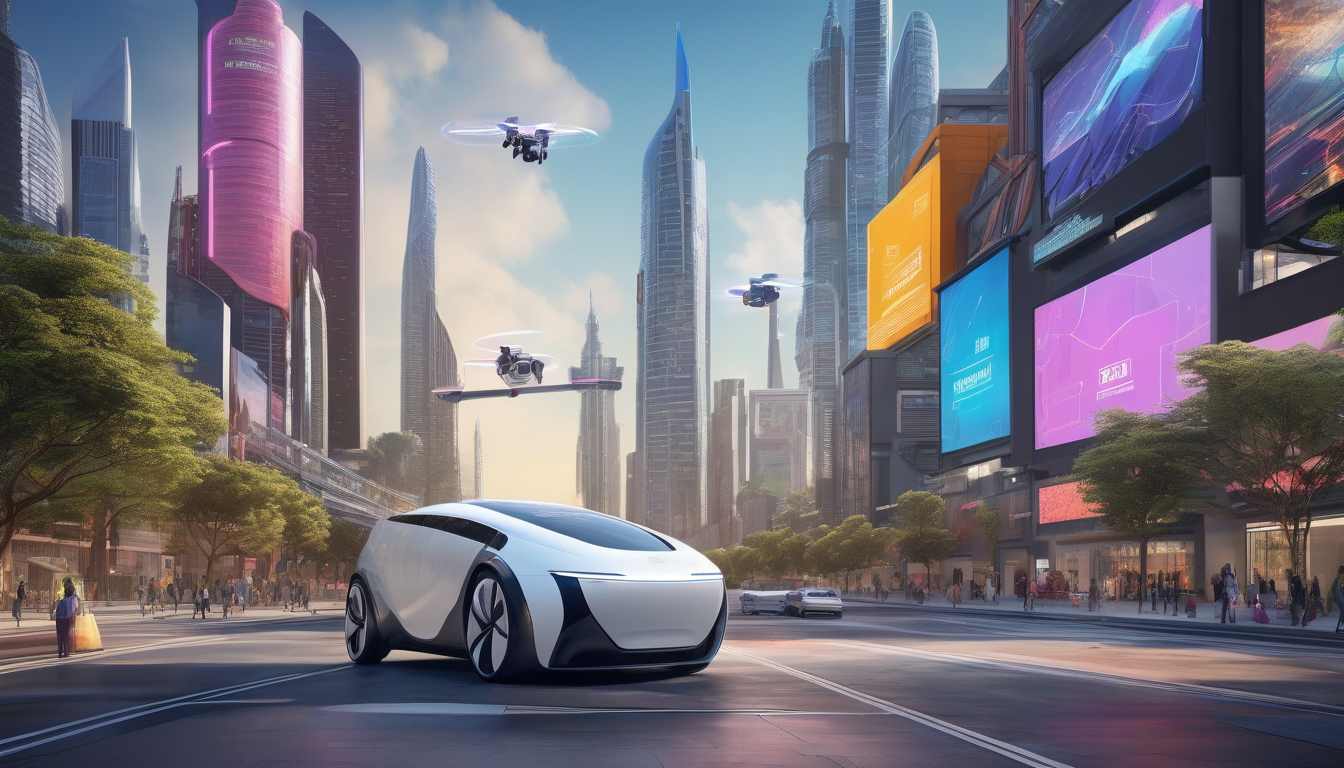
Future Job Market Changes
The rise of autonomous vehicles is not just about technology; it’s about transforming the job market as we know it. Imagine a world where the daily commute is handled by AI, freeing up time for leisure or productivity. Sounds great, right? But what happens to the millions of drivers who currently rely on these jobs? The shift towards self-driving technology is anticipated to create a ripple effect across various sectors, leading to significant changes in employment dynamics.
As autonomous vehicles become mainstream, industries like transportation, logistics, and even ride-sharing will face a dramatic overhaul. For instance, truck drivers may find their roles evolving or even disappearing as fleets of self-driving trucks take to the highways. This shift could lead to a decline in traditional driving jobs, but it also opens doors for new roles in vehicle maintenance, software development, and AI training.
Furthermore, the demand for skilled workers in tech-related fields will surge. Workers will need to adapt by acquiring new skills that focus on technology and automation. Here’s a quick look at potential job shifts:
- Increased Demand for Tech Jobs: Roles in AI development, cybersecurity, and data analysis will be essential.
- New Safety and Compliance Roles: As regulations evolve, there will be a need for professionals who can ensure safety standards are met.
- Vehicle Maintenance Specialists: Even autonomous vehicles will require regular maintenance, creating jobs in this area.
In summary, while the future of autonomous vehicles may seem daunting for some, it also presents exciting opportunities for those willing to adapt. The key lies in retraining and reskilling the workforce to meet the demands of this new landscape. As we embrace this technological revolution, it’s crucial to consider how we can prepare for a job market that will look drastically different in the years to come.
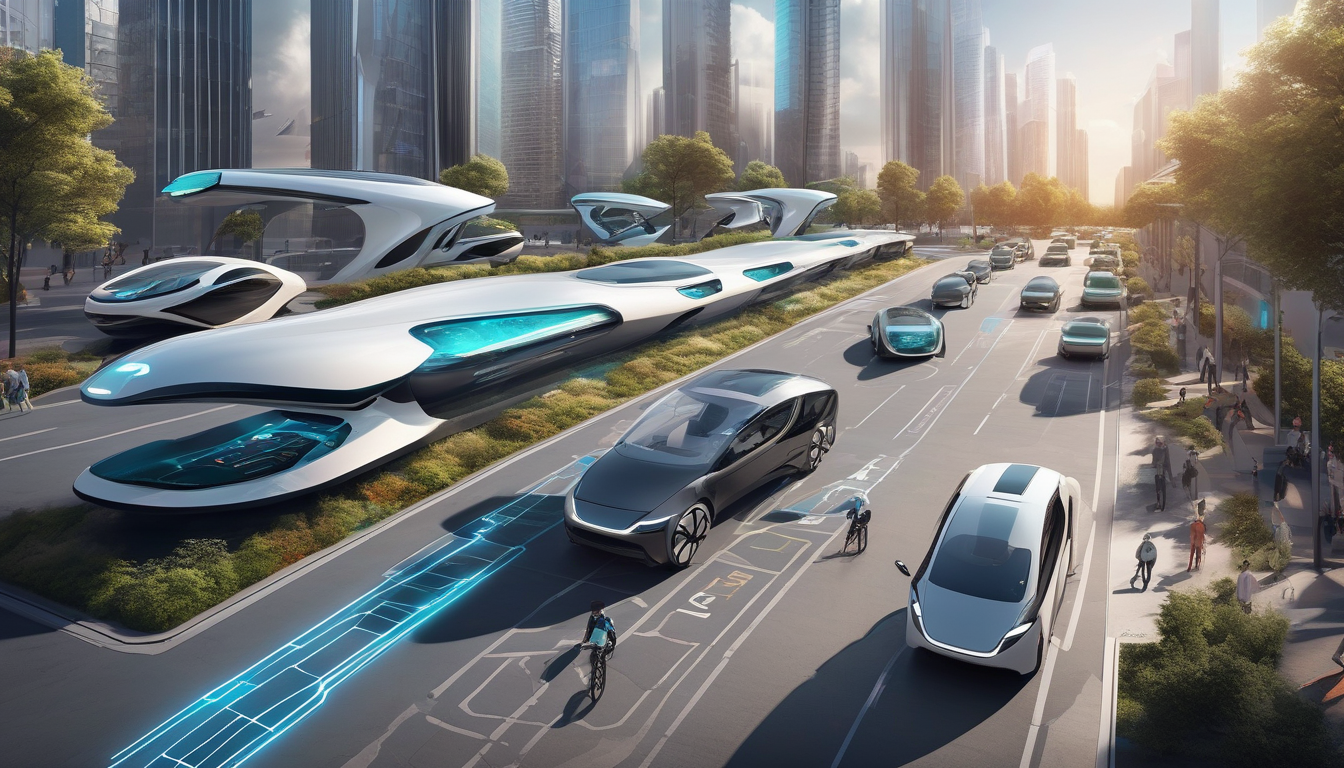
Global Market Trends
The landscape of the global market for autonomous vehicles is rapidly evolving, reflecting a dynamic interplay of technological advancements, consumer demand, and regulatory frameworks. As countries around the world recognize the potential of self-driving technology, investments in research and development are surging. This surge is not just a ripple; it’s a wave transforming how we think about mobility. For instance, major players in the automotive industry are racing to develop cutting-edge AI systems that can seamlessly integrate with existing infrastructures.
In the United States, the autonomous vehicle market is projected to reach $60 billion by 2030, driven by advancements in AI and machine learning. Meanwhile, countries like China are not far behind, with significant government backing fueling their ambitions to lead in this transformative sector. The competition is fierce, and it’s not just about who can build the fastest car; it’s about who can create the safest and most reliable systems.
One of the key trends influencing this market is the collaboration between tech companies and traditional automotive manufacturers. Partnerships are becoming essential as each party brings unique strengths to the table. For example:
- Tech companies provide advanced software and AI capabilities.
- Automakers contribute their extensive knowledge of vehicle design and safety regulations.
Moreover, the demand for autonomous vehicles is not just about convenience; it’s also about sustainability. Many consumers are becoming more environmentally conscious, pushing for vehicles that not only drive themselves but also minimize emissions. This trend is prompting manufacturers to explore electric and hybrid models as they develop their autonomous fleets.
As we look ahead, the global market for autonomous vehicles is set to witness substantial growth. With ongoing innovations and increasing consumer acceptance, the future of mobility is not just autonomous; it’s also sustainable and interconnected. The question remains: will we embrace this change, or will we cling to the past?
Frequently Asked Questions
- What are autonomous vehicles?
Autonomous vehicles, also known as self-driving cars, are vehicles that use artificial intelligence (AI) to navigate and operate without human intervention. They rely on a combination of sensors, cameras, and advanced algorithms to understand their surroundings and make driving decisions.
- How does AI improve the safety of autonomous vehicles?
AI enhances safety by processing vast amounts of data from the vehicle’s environment in real-time. This allows for quicker reactions to potential hazards, better decision-making in complex situations, and the ability to learn from past experiences to improve future performance.
- What are the main challenges facing autonomous vehicles?
Some of the key challenges include regulatory hurdles, public acceptance, technological limitations, and ethical dilemmas. Addressing these issues is crucial for the widespread adoption of autonomous vehicles on our roads.
- How will autonomous vehicles impact urban transportation?
Autonomous vehicles have the potential to transform urban transportation by reducing traffic congestion, optimizing routes, and improving overall efficiency. This could lead to less time spent in traffic and a more streamlined public transport system.
- What ethical considerations are associated with self-driving cars?
Ethical considerations include how autonomous vehicles make decisions in critical situations, who is liable in the event of an accident, and the broader societal implications of replacing human drivers with machines.
- Will autonomous vehicles affect job opportunities?
Yes, the rise of autonomous vehicles may lead to job displacement in driving-related professions. However, it also creates opportunities in tech and engineering fields, necessitating retraining and adaptation for the workforce.

